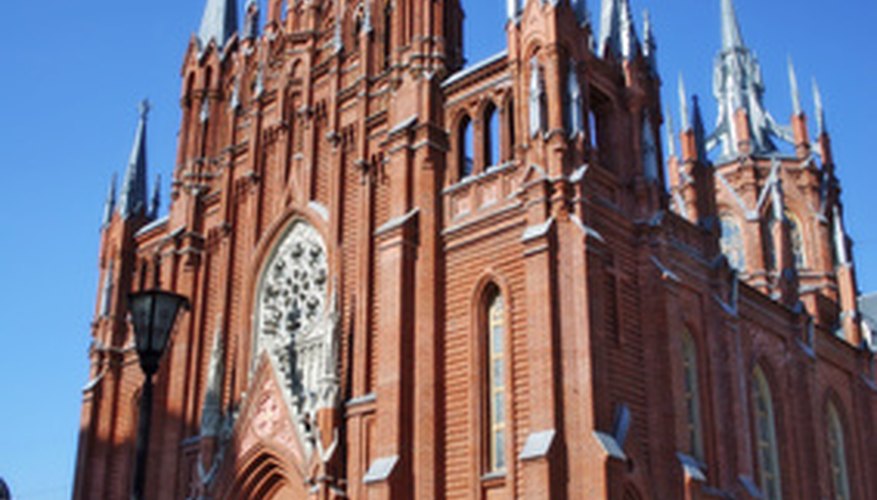A sacristan is a lay member of the Catholic ministry who is in charge of maintaining the sacristy, where the church's liturgical devices are kept. The sacristan also maintains the church's ceremonial equipment, such as vestments, sacred vessels and ritual books. The sacristan must be a baptised Catholic and a member of the church he serves. He must also have basic knowledge and experience with the liturgical rites performed in the church.
Sacristy Maintenance
The sacristy is a locked room where all of a church's vestments, altar linens and other equipment for mass and liturgical rites are kept. The sacristan maintains the sacristy, ensuring that all sacramental items are secured in the room in an orderly fashion. The sacristan also ensures no one's personal items, such as purses or coats, are left in the sacristy. Each church will provide its sacristan with its own guidelines for how the sacristy and the articles within are to be maintained.
- The sacristy is a locked room where all of a church's vestments, altar linens and other equipment for mass and liturgical rites are kept.
Ceremonial Equipment Maintenance
The sacristan is also responsible for ensuring all liturgical items are clean and functional, and must notify the priest if any device needs to be repaired or replaced. Depending on the church, the sacristan is either responsible for washing vestments and altar linens, or is responsible for overseeing the laundry service. Finally, the sacristan is responsible for ordering all supplies and materials, such as candles and sacramental host and wine, as needed.
Preparation for Mass
The sacristan sets up the sanctuary for mass, ensuring all the requisite books and sacramental vessels are in place. These duties should be completed before mass so that the sacristan does not have to leave mass to perform her duties. The sacristan should ensure the sanctuary is clean and all necessary furniture is in place and in good repair. She assists with the decoration of the church, lays out the vestments and sets up all the liturgical books the priest will require for the service. Each priest may desire specific books or vessels, so the sacristan must keep track of each priest's preferences.
- The sacristan sets up the sanctuary for mass, ensuring all the requisite books and sacramental vessels are in place.
Cleaning After Mass
After Mass has concluded, the sacristan is responsible for ensuring the sanctuary is clean and all vessels are cleansed, purified and returned to the sacristy. At the same time, the sacristan may also be preparing for the next Mass, if there is one following immediately after the one that has just concluded. Each church has its own guidelines detailing the purification process, as well as where each object should be placed after being cleansed and purified.
